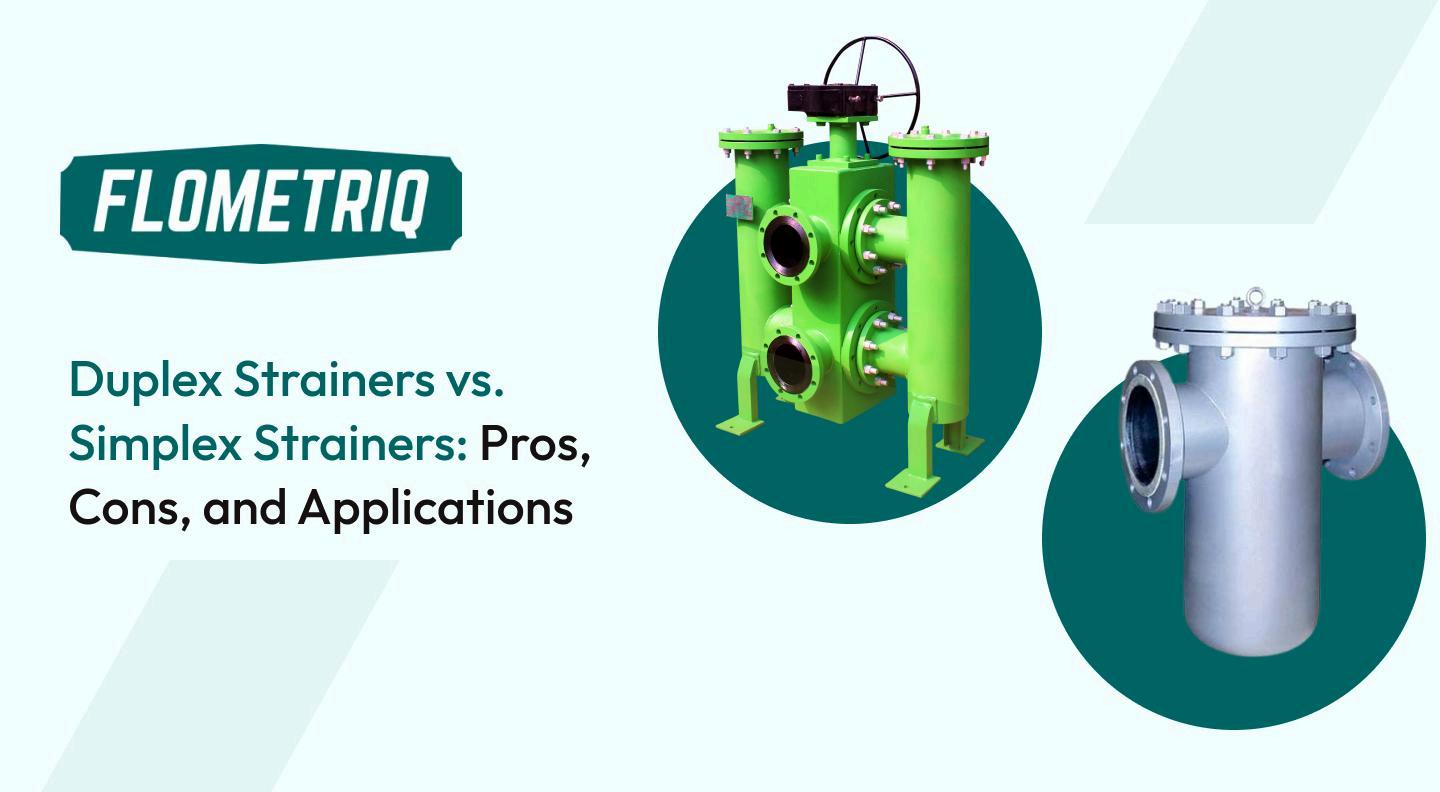Duplex Strainers vs. Simplex Strainers: Key Differences, Pros,
and Ideal Applications

When designing an efficient filtration system, one key decision stands out: choosing between a Simplex and a Duplex strainer Both devices serve the critical function of removing solid particles from liquids to protect downstream equipment, but they operate differently and serve distinct purposes.
This article breaks down their core differences, advantages, disadvantages, and practical applications to help you determine which is best for your system.
What Is a Simplex Strainer?
A Simplex strainer, also known as a single-basket strainer, features a single chamber designed to catch solid debris It’s straightforward, compact, and easy to install and maintain
However, Simplex strainers require the system to be shut down temporarily during maintenance, making them more suitable for batch processes or non-critical applications where scheduled downtime is acceptable
Pros of Simplex Strainers
● Cost-effective: Simple design reduces manufacturing and installation costs
● Space-saving: Compact structure ideal for limited space.
● Low maintenance: Fewer moving parts lead to easier upkeep
● Perfect for batch systems: Works well when periodic stops are manageable
Cons of Simplex Strainers
● Requires shutdown: Cleaning demands the temporary halting of the system.
● Not suited for critical operations: Continuous processes can’t afford the downtime
● Limited capacity: Risk of clogging in high-flow or high-debris systems
Typical Applications
Simplex strainers are widely used in:
● Water treatment
● Agriculture and irrigation
● HVAC systems
● Marine and automotive fuel lines
● Batch chemical processing
What Is a Duplex Strainer?
A Duplex strainer, or twin-basket strainer, includes two parallel baskets and a valve mechanism that allows fluid to be diverted from one chamber to the other. This design enables continuous filtration you can clean one basket while the other remains operational.
Ideal for critical systems that must run non-stop, Duplex strainers offer reliability without sacrificing performance during maintenance.
Pros of Duplex Strainers
● Uninterrupted flow: Maintenance doesn’t require shutting down the system
● Efficient maintenance: Switch between baskets easily for cleaning
● Extended lifespan: Regular servicing without stress on the system.
● High capacity: Suitable for heavy-duty, high-volume applications.
Cons of Duplex Strainers
● Higher upfront cost: More complex design increases the price
● Larger footprint: Requires more installation space.
● More complex installation: Setup and servicing are more intricate.
Typical Applications
Duplex strainers are commonly found in:
● Oil and gas pipelines
● Food and beverage production
● Power plants
Difference between Duplex Strainers vs. Simplex Strainers
Feature
Simplex Strainer
Duplex Strainer
Operation Requires shutdown for cleaning Continuous operation without shutdown
Maintenance Manual cleaning during downtime Alternate basket cleaning on-the-fly
Cost Lower initial investment Higher initial investment
Footprint Compact and space-saving Larger, needs more installation room
Best For Batch or low-risk processes Mission-critical, high-flow systems
Final Thoughts
Assess your system’s flow requirements, criticality, and maintenance windows before making the call The right choice will enhance efficiency, reduce wear on equipment, and save time and money in the long run
For more information, please visit
https://wwwflometriq com/blog/duplex-strainers-vs-simplex-strainers/
